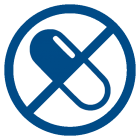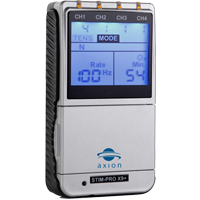TENS application for tendonitis

The tendons or tendon sheaths can become inflamed as a result of incorrect loading or overuse (inflammation of the tendon sheath is referred to as tendovaginitis, in inflammation of the tendon as tendinitis and if the tendons at the bone attachment are damaged or chronically irritated, then this is referred to as tendon attachment tendinopathy, which causes any Movement causes pain. During therapy, the inflamed area is immobilized for a period of time until the symptoms subside and the inflammation disappears. During the period in which you feel pain, you can use a TENS device to relieve pain.
The tendons have a very important function in our body. They represent the connection between our bones, joints and muscles and thus enable us to carry out movements and exertion. At particularly stressed points, tendons have a kind of "protective cover", the tendon sheaths. These surround one or more tendons and are filled with a viscous body fluid, the synovia. This serves as a natural lubricant and allows the tendon to move freely within it.
A TENS device transfers electrical impulses to the skin via electrodes, which has two effects. On the one hand, the electrical impulses can block the transmission of pain to the brain, which means that the pain may no longer be perceived. On the other hand, the TENS application can support the natural pain control mechanism of our body so that its own painkilling substances, the so-called endorphins[1], are released. Using a TENS device can also improve blood circulation[2].

-

This guide is for orientation purposes and does not replace the supervision of a doctor or therapist. Please follow the warnings and safety instructions of your device. Changes and errors are possible.
-

Number inside the circle: Channel number
Circle color: Red = Electrode 1, Black = Electrode 2
The recommended programs for axion TENS devices
*The STIM-PRO Eco is a manual TENS device. If you have not received parameter settings from your therapist, please use a frequency range between 70 and 120 Hz (burst mode 2 Hz) and a pulse width range between 150 µs and 200 µs.
Please note when using TENS:
The intensity should be adjusted so that it is felt as a pleasant tingling sensation. The duration of the application should be approx. 40 minutes in order to be able to achieve a lasting reduction in pain. It also makes sense to switch programs every now and then.
Causes of tendonitis
The advantages of pain treatment with TENS
-

From everywhere
You can use TENS therapy anywhere. It doesn't matter whether you're sitting comfortably on the sofa or in the office.
-

Drug free
TENS pain therapy is an alternative to drug pain treatment
-

At any time
You can use TENS flexibly and at any time. Success can already be achieved after the first treatment
-

Free of side effects
When used correctly, pain treatment with TENS has practically no side effects
Studies and scientific sources








